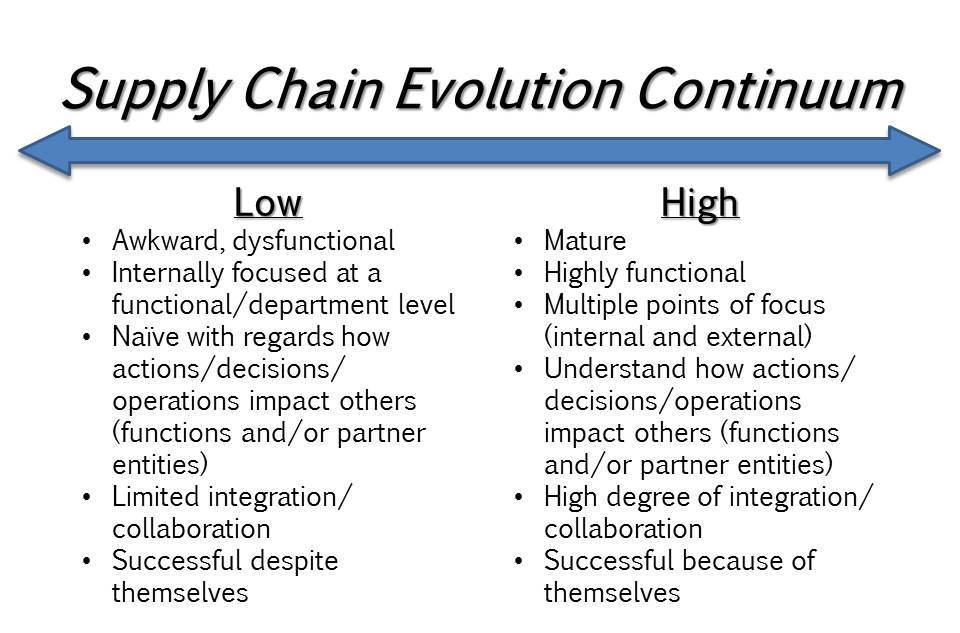
How Evolved Is Your Supply Chain?
The APICS Dictionary, 14th edition, defines Supply Chain Management (SCM) as “the design, planning, execution, control, and monitoring of supply chain activities with the objective of creating net value, building a competitive infrastructure, leveraging worldwide logistics, synchronizing supply with demand, and measuring performance globally.” Where globally can mean “either worldwide or applying to the chain as a whole rather than to a particular entity within the chain.”
Other important aspects of SCM according to APICS Fundamentals of Supply Chain Management, Module 1, include three things that point to the importance of collaboration with suppliers and customers alike:
- SCM is about creating net value – not all about squeezing out costs from one activity or another.
- Value-creating activities in the supply chain should transcend the activities of particular entities in the chain – the supply chain has to produce value for more than one stakeholder (i.e. all partners need to realize value) in addition to generating value for the consumers or investors.
- Managing supply chains requires a balancing act among competing interests – just like balancing competing priorities of finance, marketing, and operations internally.
Like many things, an organization’s supply chain(s) and SCM practices evolve over time as they work toward customer focus and creation of net value. Regardless of where an organization begins its evolution or its current position on the continuum, the goal is to move as close to a highly evolved operation as possible.
Through the years, I have worked with organizations at varying points of evolution. Some even demonstrate variation within their own organization, having highly evolved supply chains for their core product offerings while operating at a much lower level on the continuum for extension offerings that follow a different supply chain. While all are looking to move to the right on the continuum, they have been successful regardless of their current level of evolution.
Based on this, I am curious:
- How evolved is your supply chain?
- Are your different supply chains operating at the same or different levels of evolution?
If you are not sure how to answer these questions, look for a short self-assessment in my next post.






